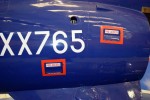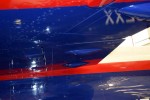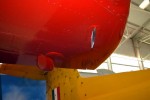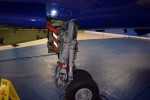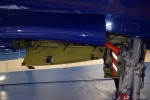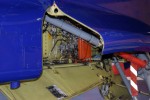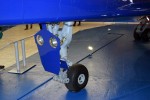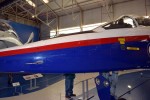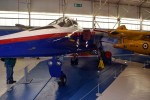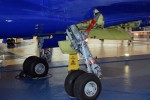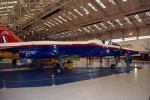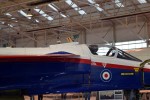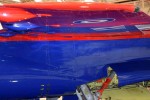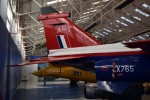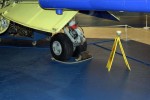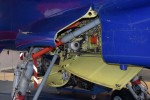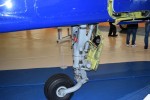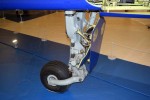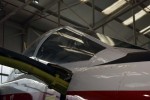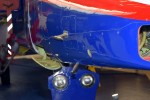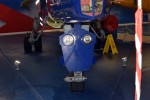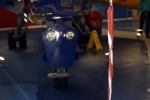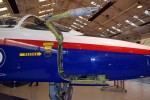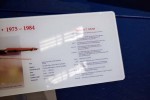1⁄1SEPECAT Jaguar ACT Demonstrator
...
Post a Comment
The Jaguar was the result of an Anglo-French collaboration to develop an advanced training and strike aircraft, entering service with the Royal Air Force in 1973.
XX765 was withdrawn from RAF service to demonstrate the feasibility of Active Control Technology (ACT), under development by British Aerospace (BAe). The aircraft's normal control rods were replaced with a 'fly-by-wire' (FBW) control system, which used four independent computer-controlled electrical channels to relay instructions to the flight surfaces. The aircraft was further modified by fitting large leading edge strakes (wing extensions) to move the centre of lift forward and adding ballast to the rear fuselage to move the centre of gravity aft. This enhanced lift and drag characteristics and made the tail plane more efficient thereby allowing smaller lighter engines with greater fuel efficiency to be used, decreasing overall weight by 15%.
Flight trials began in October 1981. Test pilots were impressed by the crisp control responses and smooth flight. The aerodynamic instability of the aircraft enhanced manoeuvrability, but the computer-controlled flight commands provided split-second corrections to compensate for the unstable configuration.
The FBW Jaguar programme ended in September 1984 after 96 flights. The information gleaned has been used in the development of the Eurofighter. In 1991, BAe loaned XX765 to Loughborough University for study by aeronautical engineering students. The aircraft was transferred to RAF Museum Cosford in September 1996 and repainted by British Aerospace into its original 'raspberry ripple' colour scheme in 1999.
XX765 was withdrawn from RAF service to demonstrate the feasibility of Active Control Technology (ACT), under development by British Aerospace (BAe). The aircraft's normal control rods were replaced with a 'fly-by-wire' (FBW) control system, which used four independent computer-controlled electrical channels to relay instructions to the flight surfaces. The aircraft was further modified by fitting large leading edge strakes (wing extensions) to move the centre of lift forward and adding ballast to the rear fuselage to move the centre of gravity aft. This enhanced lift and drag characteristics and made the tail plane more efficient thereby allowing smaller lighter engines with greater fuel efficiency to be used, decreasing overall weight by 15%.
Flight trials began in October 1981. Test pilots were impressed by the crisp control responses and smooth flight. The aerodynamic instability of the aircraft enhanced manoeuvrability, but the computer-controlled flight commands provided split-second corrections to compensate for the unstable configuration.
The FBW Jaguar programme ended in September 1984 after 96 flights. The information gleaned has been used in the development of the Eurofighter. In 1991, BAe loaned XX765 to Loughborough University for study by aeronautical engineering students. The aircraft was transferred to RAF Museum Cosford in September 1996 and repainted by British Aerospace into its original 'raspberry ripple' colour scheme in 1999.
Copyright ©2021 by Darren Baker. Images also by copyright holder unless otherwise noted. The views and opinions expressed herein are solely the views and opinions of the authors and/or contributors to this Web site and do not necessarily represent the views and/or opinions of AeroScale, KitMaker Network, or Silver Star Enterrpises. Images also by copyright holder unless otherwise noted. Opinions expressed are those of the author(s) and not necessarily those of AeroScale. All rights reserved. Originally published on: 2019-05-27 14:58:07. Unique Reads: 11853







